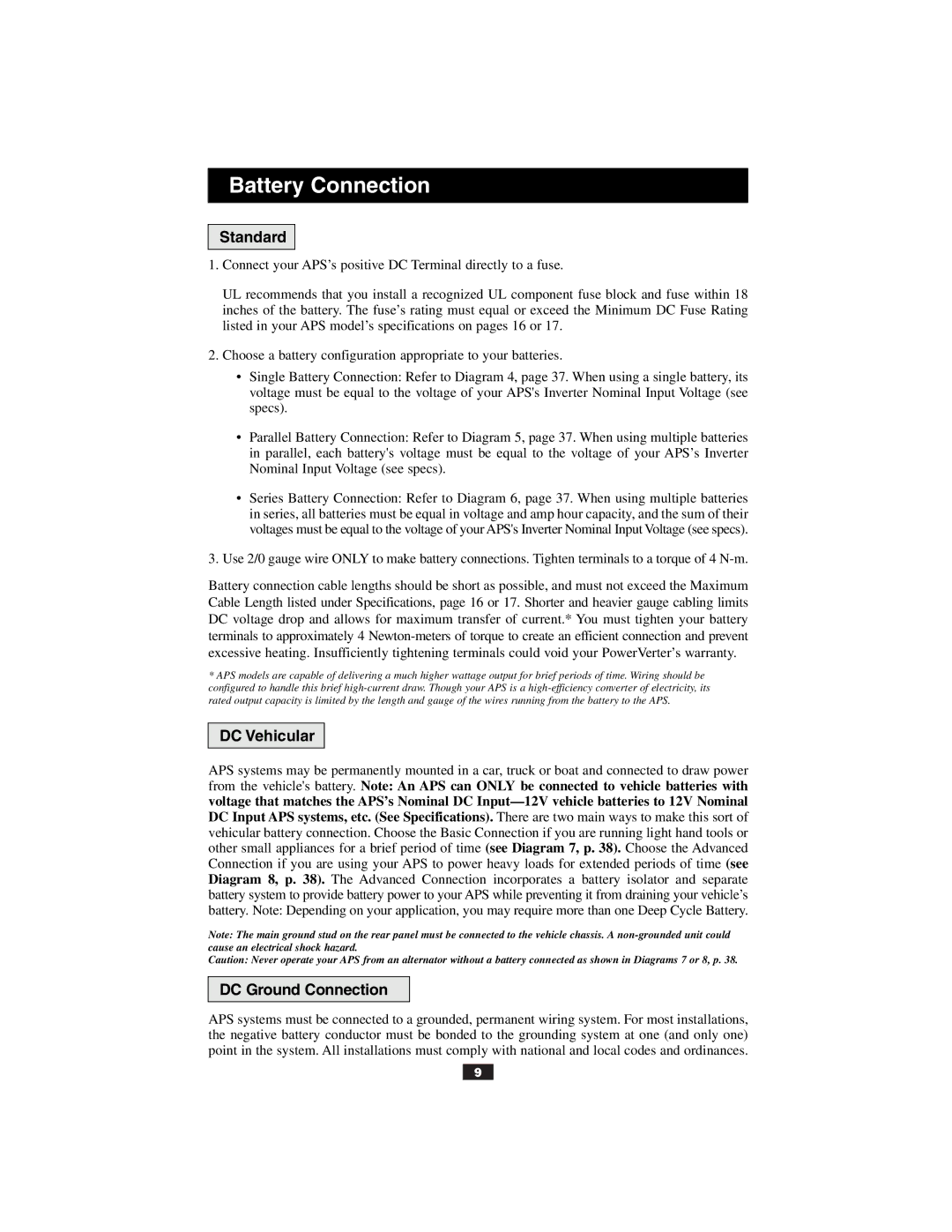Alternative Power Source specifications
Tripp Lite, a leader in power protection, offers a range of alternative power sources designed to meet the diverse needs of users in both residential and commercial settings. Their innovative solutions focus on reliability, performance, and versatility, making Tripp Lite a trusted name for those seeking uninterrupted power supply.One of the standout products in their lineup is the Tripp Lite UPS (Uninterruptible Power Supply) system, which ensures that critical equipment remains powered during outages. These UPS units typically feature advanced technologies such as Automatic Voltage Regulation (AVR), which corrects minor power fluctuations without switching to battery. This feature helps extend battery life and ensure equipment receives a stable power supply.
Tripp Lite’s UPS models come equipped with a variety of output options, including multiple outlets for connecting devices. Many units also feature USB ports for charging mobile devices or connecting to computers for power management through Tripp Lite’s PowerAlert software. This software provides real-time monitoring and alerts, allowing users to track battery performance and receive notifications about power events.
In addition to UPS systems, Tripp Lite offers portable power stations as alternative energy solutions. These stations are particularly useful for outdoor enthusiasts, contractors, or anyone needing temporary power away from the grid. With features such as pure sine wave output, users can run sensitive electronics without the risk of damage. The battery technology used in these power stations often includes lithium-ion for lightweight portability and enhanced efficiency, ensuring a reliable power supply on the go.
Tripp Lite’s commitment to safety is evident in their products, which include built-in surge protection to guard devices against voltage spikes and electrical surges. Many models are designed with a user-friendly interface, featuring clear display screens that show battery status, load levels, and remaining runtime, making it easy for users to monitor their power situation.
Furthermore, Tripp Lite understands the importance of sustainability. They strive to design their products with energy efficiency in mind, often adhering to stringent environmental standards during production and operation.
In conclusion, Tripp Lite’s alternative power sources embody the features and technologies that businesses and consumers require for reliable power. With innovations like AVR, versatile output options, and user-friendly monitoring systems, Tripp Lite ensures that users can trust their products to provide lasting power solutions in any environment. Whether for home use, office settings, or outdoor adventures, Tripp Lite continues to pave the way in power protection and management.

